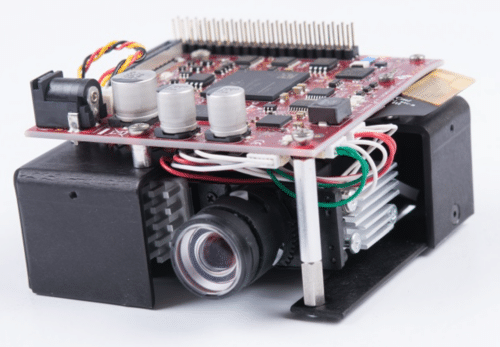The portable 1080p display design showcases DLP technology, facilitating compatibility with low-cost processors and diverse applications, suitable for smart home integration.

In an increasingly mobile-centric world, the demand for portable 1080p displays has surged, driven by the desire for high-definition visual experiences on the go. These displays, offering crisp and detailed imagery, serve a multitude of purposes ranging from entertainment and gaming to productivity and professional presentations. With their versatility, convenience, and ability to provide immersive viewing experiences, portable 1080p displays have become indispensable companions for users seeking to enjoy premium visuals anytime, anywhere.
The reference design of portable, smallest 1080p display from Texas Instruments (TI) showcases the DLP Pico Products p23-inch TRP 1080p display chipset within the DLP LightCrafter Display 230NP evaluation model (EVM). It incorporates the DLP230NP 1080p digital micromirror device (DMD), DLPC3436 display controller, and the DLPA2005 PMIC, and LED driver. It facilitates the development of a p23 1080p DLP product with a small form factor, compatible with low-cost processors like the BeagleBone Black and Raspberry Pi. This design finds applications in various fields such as mobile projectors, appliances, mobile smart TVs, and more. It encompasses electronics, optics, and a connector for easy integration with the Raspberry Pi 4B.
The features of this product include an affordable evaluation of 1080p DLP display technology. It offers a plug-and-play DLP 1080p optical engine that supports less than 100 lumens. Additionally, it provides I2C and 18-bit parallel RGB video interfaces to support low-cost embedded processors. Its compact form factor makes it suitable for various applications. These applications encompass personal electronics, portable electronics with a focus on gaming, appliances, and non-medical wearables.
The .23-inch TRP 1080p display chipset empowers the integration of DLP technology into diverse applications demanding 1080p resolution, low power consumption, and a compact form factor. This reference design offers developers a rapid implementation route for a complete 1080p display subsystem, leveraging a Raspberry Pi 4B as a cost-effective front-end processor.
Each of the DLPC3436 I2C interface ports accommodates a 100-kHz baud rate. As per protocol, I2C transactions adhere to the speed of the slowest device on the bus, eliminating the necessity to align the speed grade of all devices within the system.
The concept of smart home encompasses a wide range of products and services aimed at automating and connecting various devices within the household, including lighting, thermostats, appliances, and entertainment systems. Introducing smart displays utilizing DLP Pico™ technology into the home environment presents numerous advantages, such as interactive, adaptive, and reconfigurable interfaces capable of replacing traditional controls like buttons, tablets, LCD panels, and mechanical knobs throughout the house. These smart displays leverage DLP technology to deliver benefits in terms of brightness, resolution, compact form factor, low power consumption, throw ratio, and interactivity, making them versatile additions to modern households.
TI has tested this reference design. It comes with a Bill of Material (BOM), schematics, etc. You can find additional data about the reference design on the company’s website. To read more about this reference design, click here.






